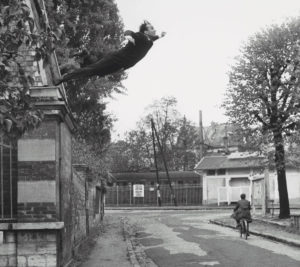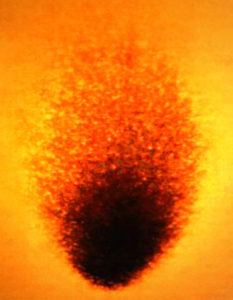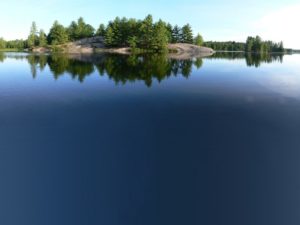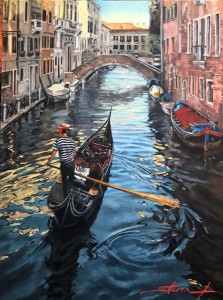Dear Artist,
“Curator,” one of the commonest words in the art vocabulary is hardly mentioned in the art handbooks. According to the Oxford Dictionary it’s derived from the noun ‘curate’ — officially “the assistant to a priest or a clergyman appointed to take charge of a parish during the incapacity or suspension of an incumbent.” In historic law a curator was a guardian of “a minor or a lunatic.” These days it’s the person in charge of a museum or art gallery. In our business we generally think of the curator as the chooser of what’s going to be seen by the public.

Yves Klein: Leap into the Void, 1960
photography by mma, Digital File DP109274.tif
retouched by film and media (jnc) 12_14_11
This license to choose implies that a certain amount of specialized education — perhaps even a curatorial degree — might be necessary to do a proper job. In addition to having a wide-ranging knowledge, some curators are said to be “talented.” For many artists a curator is rather an educated non-artist who is appointed to an institution in order to jury taste. His or her job is to keep the unacceptable stuff out and see that the acceptable stuff gets in. In order to accomplish this, some curators like to help their favourite artists with their vision.
We artists either love ’em or hate ’em — often based on how much we’re curated “in” or “out.” The general public generally doesn’t know what to think. Because of the mystique around art they tend to give them the benefit of the doubt. Like the guy who does the house cleaning and straightens the chairs at the municipal hall — somebody has to do it. Opinions of the usefulness of the position run the full gamut. Some see curating as the fettering of the creative spirit. As my friend Joe Blodgett says, “When truly bad art is to be found, curators will be the ones to find it.” Joe and I punch each other into the wee small hours about this one. I find there’s plenty of bad art to be found without benefit of clergy. And wonderful stuff, too.
What’s going on? Our world is democratizing. Artists and the general public are now having a more effective input into what’s being seen. Commercial art galleries, with their wide-ranging tastes and their inability to stage public entertainments, have become the beating heart of art-making. We and our collectors provide our own curatorship. Like it or not, look out, we lunatics are taking charge of the asylum.
Best regards,
Robert
PS: “Poetry fettered fetters the human race. Nations are destroyed, or flourish, in proportion as their poetry, painting, and music are destroyed or flourish.” (William Blake)
Esoterica: Public entertainment has become one of the territories of today’s curator. This is a useful service. Performance art, for example, jogs sensitivities and preconceived ideas, re-aligns conservative neurons and creates a buzz of possibilities that might not have been previously seen.
This letter was originally published as “The Curator” on January 2, 2004.
Have you considered joining our Premium Artist Listings? Share your work with thousands of readers. 100% of your listing fee contributes to the production of The Painter’s Keys. Thanks for your friendship.
“The fact that in the last 10 years only five of the 40 Turner Prize nominees have been painters tells you more about curators than about the state of painting today.” (Charles Saatchi)
Featured Workshop
Six days in the Ontario backcountry. Locations accessible only by canoe. Canoe, camp, cook and paint like the early North American plein air artists. Every day we do a short paddle from our base camp to a painting location and spend the day capturing the scene. Workshop leader Keith Thirgood has been teaching adults to paint for 12 years and canoeing and camping for most of his life. Keith teaches a step by step approach to plein air, which makes capturing a scene easier than you ever thought possible. He also teaches Modern Colour Theory using his special, limited palette. This set of colours is useful not only en plein air but also in the studio.
The Kawartha Highlands is an amazing place to paint. Forest, bald rock faces, hundreds of islands, sparkling water. On day seven it’s hard to leave.
For more information, visit www.wilsonstreetstudios.com.
Featured Artist
A professional painter in both watercolor and oil for over 35 years, I have been creating plein air workshops in Europe for artists to join me since 1996. Plein air is one of the most exciting methods of painting, and I teach a very easy to learn way of capturing the light quickly, that any artist can apply to their own work during our adventures to Europe. Travel for artists is a great way to immerse yourself in painting and make great advances in your techniques by watching other professionals work, and by sharing your own ideas with other artists we all grow! Authentic locations, such as a 12th Century Castle in Ireland, a French Maison in the countryside of France, or an Italian Villa in an historic hilltop village in Italy are carefully chosen. We want our artists and non-painting guests to feel relaxed and at home, with en-suite bedrooms, excellent chef prepared cuisine, and convenient transfers to painting and exploring locations so you can be where you want to be to create. Join me on our next exciting journey!








13 Comments
Should’ve used JJ’s “The Critic Sees”
As an artist, I’ve taken to curating, organizing and participating in my own group shows in recent years with titles like ‘Face Yourself’ (self-portraits); ‘Art Heals’ (deal with a specific trauma through the creation of a work of art); ‘The Mahler Collaborations (working one-on-one with individual artists to create a work of art inspired by a specific piece of classical music); and my upcoming ’15 Reasons to Live’ (works by me and 24 other artists based on themes from a documentary by a Toronto film maker that was based on a book by a London, Ontario author.
Be your own curator!
Almost without fail I have enjoyed your take on art, and I have learned a lot from your perspectives. However, this letter, has a bitter edge that sounds more than a little like sour grapes. It is also not a very nice or knowledgeable take on curatorial practice.
Curators are just art directors.
They use other people’s work to make careers for themselves.
The current art world us a bubble that promotes a very specific kind of academic (or more accurately, pseudo intellectual) work. The proponents of this work run the schools and are the gatekeepers of the galleries and, more importantly, the taps of the agencies that control the grants.
Well said!
I agree with your comment.
Art- in fact- does not begin AND end with only the artist’s involvement. Yes- some installations are totally and only the artist’s responsibility. Enter a group show? Other artists are involved- and somebody will have to hang it. Hang in a museum? The artist is unlikely to be able to control the install. Commercial gallery? The owner will be in charge. Even your framer can impact your work.
“A curator is rather an educated non-artist.” This is not always the case. Yesterday I helped hang a show for a fellow artist- in a co-op- where the artists are in fact in control. My first career was doing visual merchandising for a department store. When I finally quit that job- I almost immediately began to hang gallery space- something I am expert at- because I see all spatial relationships and I see all color relationships and I see all artwork related relationships.
My artist friend was tired. She has a full-time career as a Jungian Therapist. She’d had a studio issue that had complicated her production. She was too close to the work.
I said to my fellow artist friend: If the install is poor- good art can easily look bad. If the install is excellent- even less good art will look better.
We looked at available work and available wall space. I suggested moving the movable walls to reduce wall space and create a better/different flow. The work was hung in such away that even seeing it from the outside through 2 different windows would catch people’s eyes and draw them in- because of the subject matter. The install was a dialog- but my fresh experienced eye was instrumental in making the hanging as good as it could be. When we were done- not only was she very happy with how the gallery looked- she was even happier with the work itself- because the entire space flowed with fabulous energy- the traffic pattern was both better and different- and each piece enhanced the pieces around it.
A *curator* with an exceptionally trained eye can work wonders. And that curator may still be an artist- TOO. Some of us are multi-talented.
Perhaps you should look into exhibit design! Different than curation, it’s much closer to what you describe. Fun if you also like to build things.
That’s exactly what I was thinking. Exhibit design!!
When the curator of a large museum asked me if I would have a one woman show of my work in the museum in 3 years, I thought the day would never come. I never stop painting so I knew that I would have plenty of paintings if it did happen. Still, a recent email caught me off guard. “Are you ready for your up-coming exhibit this May through July?”
Yes! I whispered back from my packed full studio.
Then, more questions came quickly, “Do you have hi-rez images for me?” Yes!
“What is the Title of your exhibit?
“The Way I See It”.
An artist statement?” Here it is, always changing but similar to one I wrote 30 years ago :
“Abstractions are inherent in three-dimensional reality and I work with those abstractions with oil paint on linen within the boundary of a two-dimensional, created world.
In that world, the abstractions I am working with may be represented by me in an impressionistic or realistic way.
My subjects vary greatly because I am in awe of this life. I am drawn to all that is beautiful, all that is good, and in those things, I find a living, vibrant, and ever-changing truth that I am honored to share through my work.
Sharon, I think your comment is beautiful. Your last paragraph especially touched my heart.
This is a Genn Classic. I remember Joe Blodgett so well. :-) Thank you, Sara!
i love these letters. They are always a rich study of attitude as well as of art. So vibrant,so insightful, so much fun. I am challanged and enriched.